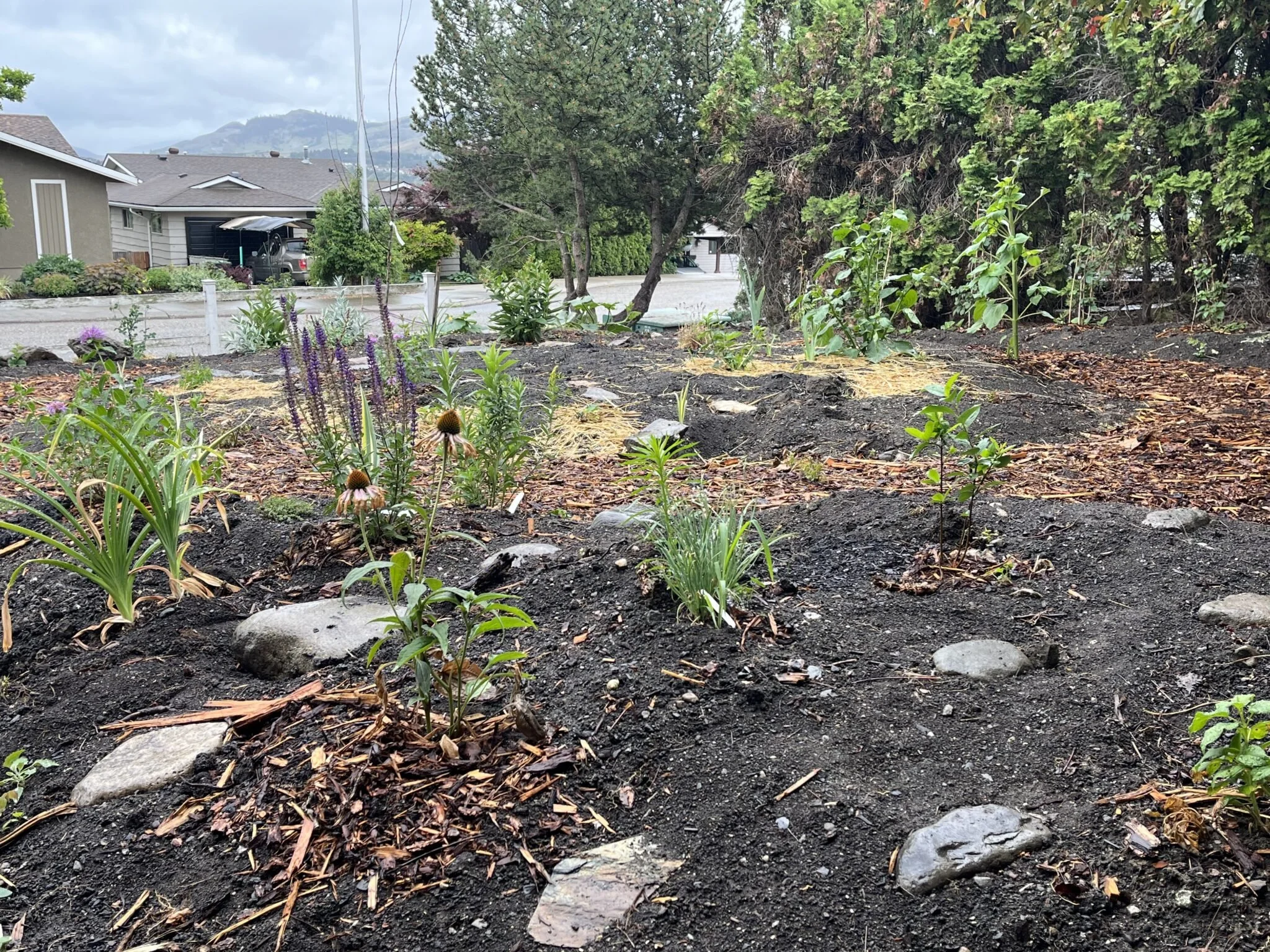The Creation of an Urban Food Forest. Part 1: Front Yard
It's been three months since I wrote "Essential Elements of Creating an Abundant Food Forest."
Which, I wrote:
"I am in the process of implementing the Permaculture Design (PDC) knowledge and skills I have gained as I transform my front yard into a vibrant food forest health-scape alive with numerous types of berries, one or two fruit trees, a hazelnut shrub, vegetables, medicinal plants, various pollinator, insectary, and nectary plants."
The principle and theory have now been turned into practice, and it feels wonderful to see the vision, effort and planning coming alive!
Overgrown
As soon as the snow melted in late February, I had someone ready to remove a tree with a crack down the middle and, as much as possible, of the abundant brush overgrowth and their roots.
Simultaneously, I removed thousands of pounds of seemingly endless rocks the previous owner placed around and buried.
Here had been the progression in a few months:
A collage of photos with trees and bushes.
A Blank Canvas
A group of plants that are in the dirt.
The fresh, predominantly brown canvas and the deep desire to get the rainwater harvesting set up quickly to capture the Spring rain (and other delays) felt overwhelming.
I am grateful for a local permaculturalist's assistance in getting started!
I was so excited to plant a colourful array of plants, trees and bushes I had been researching and learning about.
I found and ordered from some great nurseries! Zero Fox Tree Crops, Xen Nurseries, Greenbush Greenhouse, and Treetime (lingonberries). Thimble Hill Nursery does not deliver, so I can't wait to visit them next year.
Some friends kindly gave me lots of comfrey, raspberries, thornless blackberries, and gooseberry from their abundant food forest!
My "Why"?
My vision is to create an Urban Farm and grow food, herbs for medicinal uses, teas, salves, etc.
Exploring beyond lawns and current paradigms in cities is ripe with possibilities. I love learning about people changing the status quo and coming together in the community in these ways!
So many of us have evolved to place our nutritional needs solely in the hands of grocery stores with the food on the shelves travelling around the world and all the energy, resources and Earth-harmful practices that come with this.
Yes, there is undoubtedly convenience interwoven, and we have become so accustomed to this and simultaneously disconnected from our food, where it comes from, how it's grown, who is growing it, and are harsh and harmful chemicals used. What is the soil quality, and what are the ecological and humanity care practices?
My "why" is to regain resiliency, self and community connection and reliance, know the answer to the above questions, and remedy the harm and absurdity.
Our Climate is Changing
In the fall of 2021, an atmospheric river destroyed parts of the highway from where I live in the interior of BC to Vancouver, where there are many ports where food travels from and trickles in. It was alarming to see bare grocery store shelves. So many, too many worldwide, are vulnerable to food insecurity!
Climate and weather are changing. Many trees and plants are struggling due to changing climate patterns. As an example, my friends (mentioned above) lost a healthy 10-year-old Black Walnut tree that produced 30-40 pounds of walnuts each year.
I learned from a growing small fruit course by Blake Cothron (through Verge Permaculture) that berry bushes do well during climate instability.
The Fruit and Berries I have planted in the front yard (so far):
Red and Black Currants, Haskap or (Honey) Berries, Raspberries- the deer like these too much! Huckleberries, Aronia Berry, Nanking Cherry, Italian Plum (unfortunately, there is no life in it), Dwarf Nectarines, Saskatoon Berry, Strawberries, A Gooseberry, and Lingonberries- I fondly remember walking through the forest in Finland and nibbling on these wild blueberries.
Herbs, Pollinator plants and Veggies (so far):
Salvia, Wild Bergamot, Tulsi, Meadow Arnica, Catmint, Brown Eyed Susan, Lupin, Yarrow, Borage, Stevia, Spearmint, Chives, Lemon Balm, Comfrey, Motherwort, Valerian, Creeping Thyme, Fava Beans, Squash, and Sunflower.
Fed by Rainwater (as much as possible):
Two of the 4 1000 litre totes are now collecting water at the side of the house and will contribute to watering the front yard. The two others (and one behind the shed) will contribute to the backyard. Each, with the help of gravity, and when needed, an electric pump will be run on solar power next Spring.
A white pipe is attached to the side of a house.
There is a world of growth abundance happing in the back yard too! It has certainly been an undertaking to do both the front and back yard simultaneously. But I am glad I did.
I am so grateful to my dad, who has been stopping by almost daily to offer his assistance!
More to come soon in "The Creation of an Urban Food Forest. Part 2: Back Yard."
What is something that you enjoy planting, seeing and eating?
🌿✨ www.forestpath.ca| |Instagram| Facebook| Thriving Planet Vibrant Souls Publication (on Medium).




